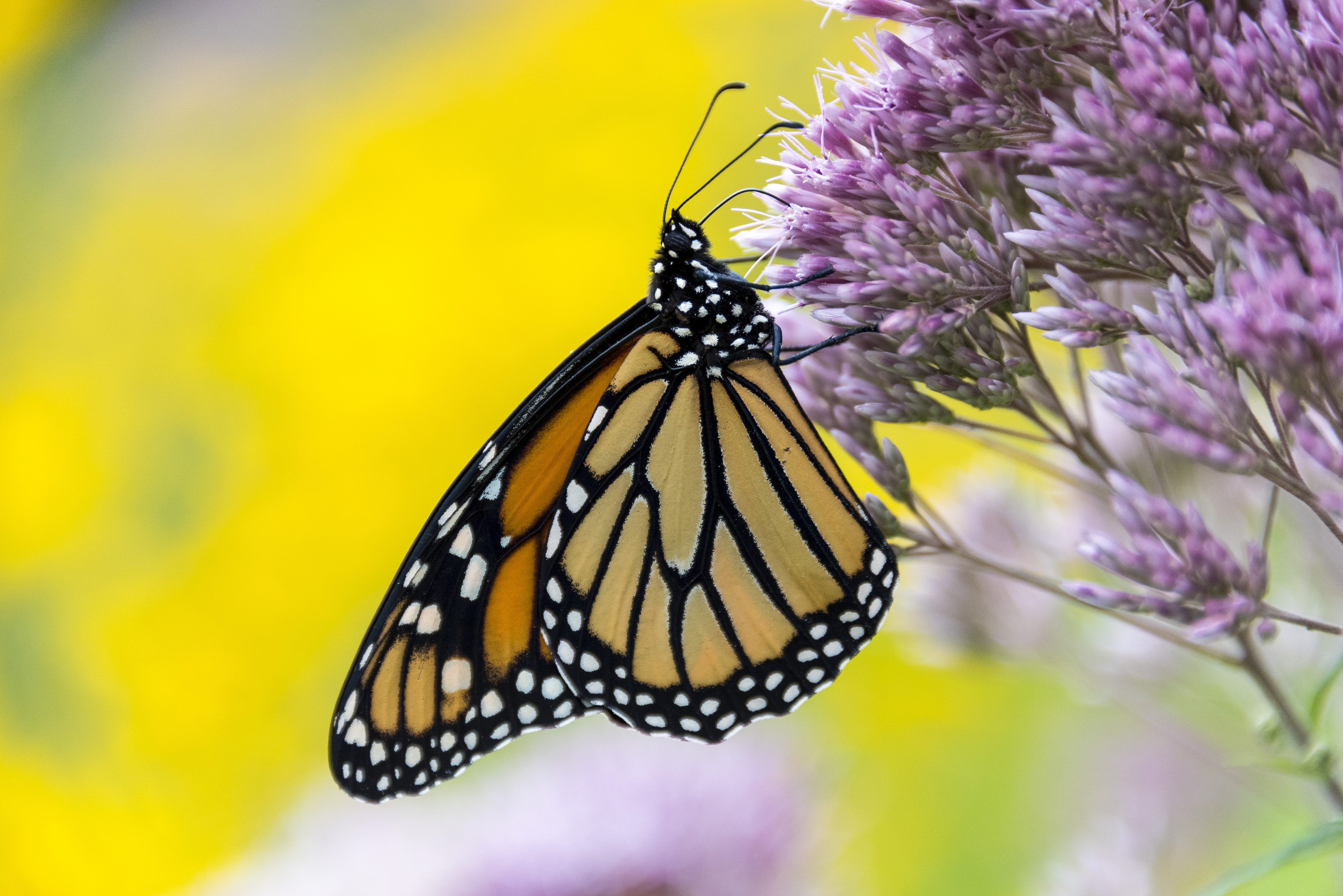12
Jun
Milkweed in Western Monarch Habitat Found to be Completely Contaminated with Pesticides
 (Beyond Pesticides, June 12, 2020) New research finds that western monarch milkweed habitat contains a “ubiquity of pesticides” that are likely contributing to the decline of the iconic species. The research, published in Frontiers in Ecology and Evolution, provides a grim snapshot of a world awash in pesticides, and raises new questions about the U.S. regulatory process that continues to allow these toxic chemicals on to the market without adequate review and oversight.
(Beyond Pesticides, June 12, 2020) New research finds that western monarch milkweed habitat contains a “ubiquity of pesticides” that are likely contributing to the decline of the iconic species. The research, published in Frontiers in Ecology and Evolution, provides a grim snapshot of a world awash in pesticides, and raises new questions about the U.S. regulatory process that continues to allow these toxic chemicals on to the market without adequate review and oversight.
“We expected to find some pesticides in these plants, but we were rather surprised by the depth and extent of the contamination,” said Matt Forister, PhD, a butterfly expert, biology professor at the University of Nevada, Reno and co-author of the paper in a press release. “From roadsides, from yards, from wildlife refuges, even from plants bought at stores—doesn’t matter from where—it’s all loaded with chemicals. We have previously suggested that pesticides are involved in the decline of low elevation butterflies in California, but the ubiquity and diversity of pesticides we found in these milkweeds was a surprise,” Dr. Forister said.
The researchers collected over 200 milkweed samples from nearly 20 different sites across the Central Valley of California, as well as from retailers that sell milkweed plants to customers. In addition to retail locations, samples were taken at agricultural sites, wildlife refuges, and urban areas. Researchers screened the milkweed samples for 262 different pesticide compounds.
The study documents 64 different pesticides across all samples, including 27 fungicides, 25 insecticides, 11 herbicides, and one pesticide adjuvant (substance mixed with pesticide to enhance performance). Every sample tested positive for at least one pesticide, with an average sample containing roughly nine different compounds in its tissue. Some samples contained as many as 25 different pesticides. Researchers note that, for most of the pesticides detected, there is little to no data on how they impact the health of monarch butterflies.
Of particular note is the insecticide chlorantraniliprole, which, in a study published earlier this year, was found to be toxic to monarchs after drifting from adjacent farmland. Chlorantraniliprole was found in 91% of all samples taken. Further, it exceeded the lethal dose necessary to kill 50% of exposed monarchs (LD50) in 58 of the 227 samples tested in the study.
“One might expect to see sad looking, droopy plants that are full of pesticides, but they are all big beautiful looking plants, with the pesticides hiding in plain sight,” said Dr. Forister.
A study published last year found 14 different agricultural pesticides on milkweed tested near farm fields in Indiana. But the ubiquity and range of pesticide contamination found in the present study presents even greater concerns. It is not an overstatement to say that western monarch populations have been experiencing catastrophic declines. Counts from early 2019 found the population dropped 86% between 2017 and 2018. Using statistical analysis of citizen science data, a 2017 study posited the extinction risk of monarch butterflies in western North America to be ~50-70% within 20 years, and ~65-85% within 50 years. As a point of comparison, in the 1980s, roughly 10 million western monarchs overwintered in coastal California. Today there are likely fewer than 300,000.
Although the extent of pesticide contamination in monarch habitat may seem daunting, it is, in fact, one of the most straightforward issues in the range of factors leading to monarch declines (including illegal logging, climate change, and habitat displacement). One important first step would be to place monarchs under federal protection. The U.S. Fish and Wildlife Service last year agreed to announce a decision on the protection status for the monarch under the Endangered Species Act sometime this year. Congress can also take decisive action by passing the Saving America’s Pollinators Act, which would immediately remove the most dangerous pollinator-toxic pesticides, and establish an independent stakeholder board to review other chemicals for their potential to harm pollinator populations. There are also actions you can take at the local and state level; plant organic seeds and starts, and encourage your state’s Governor to do the same in public spaces. For more information on the dangers pesticides pose to monarchs and what you can do to help them, see past Daily News articles and Beyond Pesticides’ BEE Protective webpage.
All unattributed positions and opinions in this piece are those of Beyond Pesticides.
Source: Phys.org Press Release, Frontiers and Ecology and Evolution










